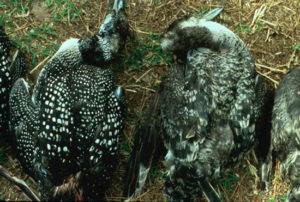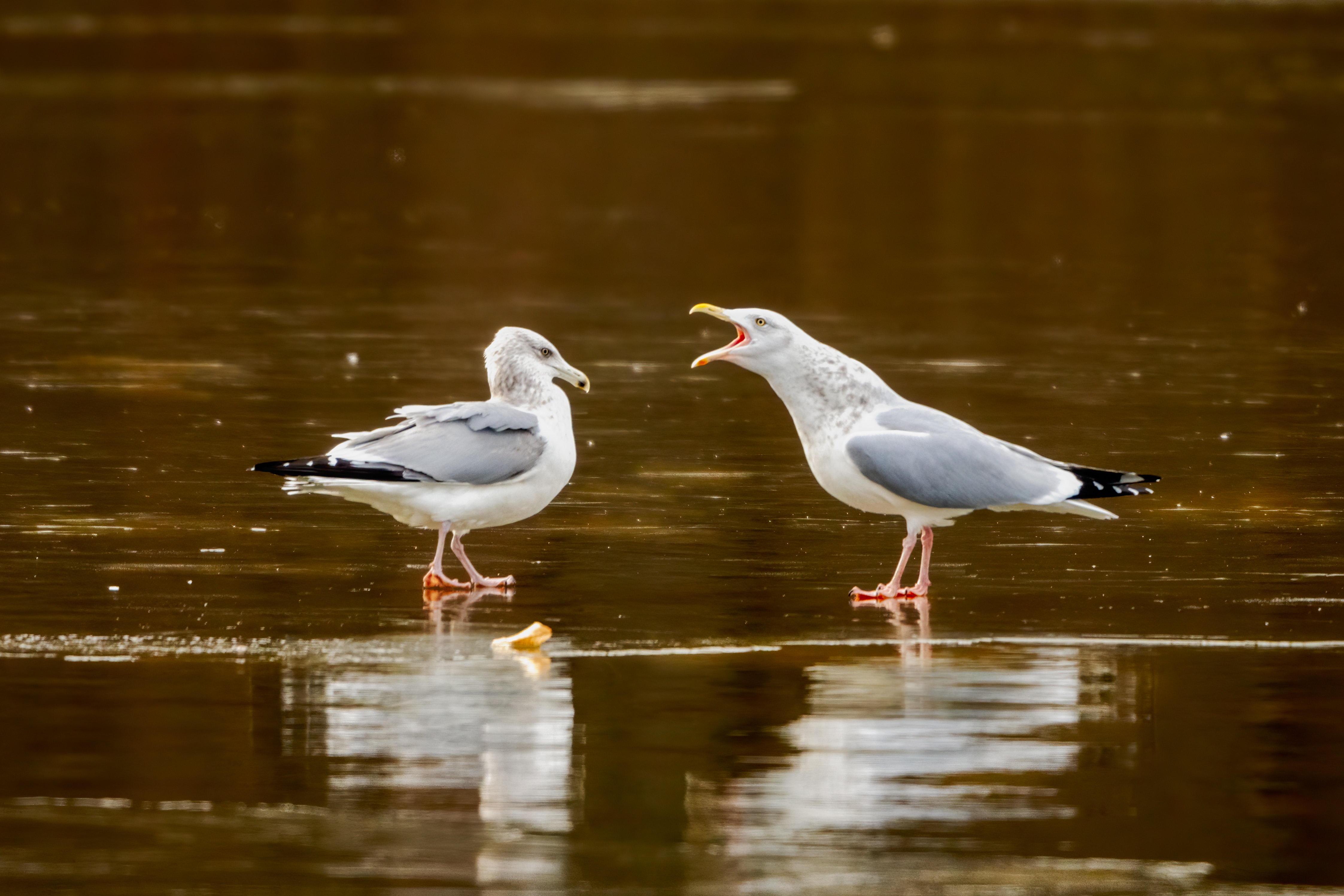HAB Impacts on Birds

Emaciated loons that washed ashore in North Carolina. (P. Spitzer)
Seabirds feed on the abundant life associated with oceans and estuaries and are thus susceptible to the effects of HABs. There is a long history of HABs impacting seabirds, from reports of red tide in the Gulf of Mexico during the 1800s killing seabirds to the mortality events, or “wrecks,” that commonly make news today. Most famously, Alfred Hitchcock’s iconic film “The Birds” was inspired by widespread reports of strangely behaving seabirds in the Monterey Bay region in 1961. While the source of this phenomenon was unknown, it was later discovered that Pseudo-nitzschia, the diatom responsible for amnesic shellfish poisoning, was present in the food chain at the time, and thus there is speculation that these birds were suffering from domoic acid poisoning. There are also reports of inland birds being affected by cyanobacterial outbreaks in freshwater ecosystems.
While seabird wrecks are frequently reported, establishing the cause of these deaths is challenging. Linkages between bird deaths and HABs are often based on incidence reports rather than comprehensive toxin analysis of tissues and stomach contents in affected individuals. It is not always possible to test bird carcasses for toxins, and is dependent on state of decomposition and proximity to analytical resources. Standardized necropsy protocols and implementation of systematic biotoxin testing are needed in order to establish definitive connections between bird mortalities and HAB species. Areas where mortalities have been observed are largely restricted to populated sections of coastline, leaving large gaps in coverage. Seabirds that live and feed nearshore are often identified as victims of HABs, but it is unclear whether this is because they are experiencing higher exposures during coastal HAB outbreaks, or are simply more likely to be observed by humans. There is also experimental and anecdotal evidence that some birds may be able to avoid algal toxins, either by regurgitation of contaminated food or selection of alternative prey.
A quarter of seabird species globally are listed as threatened or of concern, and their decline has been attributed to many environmental factors ranging from pollution to climate change. Seabirds are slow to mature and produce few offspring, which means that the mass deaths associated with HAB outbreaks come at a high cost and will impact populations for years to come. A more comprehensive understanding of HAB-seabird dynamics will help to inform conservation efforts as well as shape a broader picture of ecosystem health. Specific organisms and syndromes affecting bird species are outlined below:
Additional Resources:
- Gibble, C.M., Hoover, B.A. 2018. Interactions between seabirds and harmful algal blooms, S.E. Shumway, J.M. Burkholder, S.L. Morton (Eds.), Harmful Algal Blooms: a Compendium Desk Reference, John Wiley & Sons, Ltd., Hoboken, New Jersey (2018), pp. 223-242
- Shumway, S.E., Allen, S.M. and Boersma, P.D., 2003. Marine birds and harmful algal blooms: sporadic victims or under-reported events?. Harmful Algae, 2(1), pp.1-17.
- Van Hemert, C., Schoen, S.K., Litaker, R.W., Smith, M.M., Arimitsu, M.L., Piatt, J.F., Holland, W.C., Hardison, D.R. and Pearce, J.M., 2020. Algal toxins in Alaskan seabirds: Evaluating the role of saxitoxin and domoic acid in a large-scale die-off of Common Murres. Harmful Algae, 92, p.101730.



